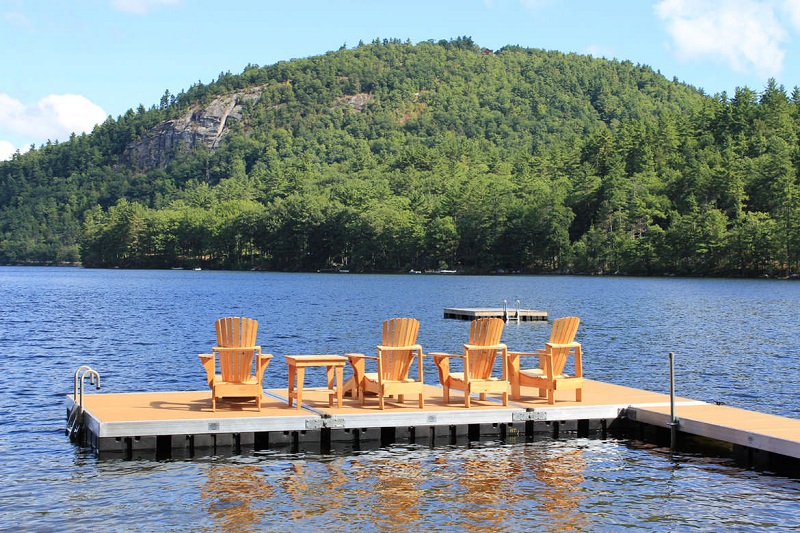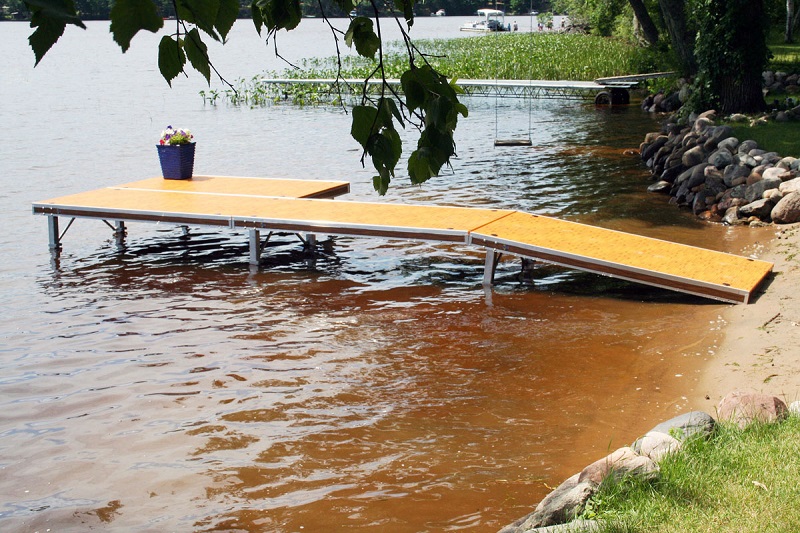
Your official resource to help you replace, complete building plans, or design and build your own dock on-site.
Whether your dock is just a total wreck or it’s just not your style, there are several resources to help you replace it, from parts, to complete building plans, to folks who can help you design and build your own and even construct it on-site.
Docks range from quite simple structures that will cost a couple thousand bucks to extremely complex systems that cost several thousand. How you determine to upgrade depends on how handy you’re, what type of shoreline and lake bottom you’re faced with, and your budget.
Be honest about your handyman status
When you’re choosing what path to consume planning for a new dock, it’s best to take stock of your situation and your skills. If you have Bob Vila-worthy skills, sufficient time, and an amenable shoreline and water depth, a “kit” dock is a superb budget-friendly option. These do-it-yourself kits, which simply assemble at the shoreline and almost drop into place, are becoming more popular.
But if you can’t get as much as camp for higher than a day or two at any given time, and/or you’re not just one to tackle a major job, consider hiring a professional to design and build your dock.
The up-front costs is going to be much more than buying materials and building it yourself, but think of the huge benefits: Your dock is going to be built right and last for quite some time, and those weekends you’d have to spend measuring, hammering and drilling can be spent on other things.
Consider lake beds and depths
You may have the backdrop and fortitude to build your own dock, but other limitations might put the brakes on your own homebuilt project. Typically, the configuration of the lake’s bottom combined together with your shoreline layout will dictate whether you will need help with the style, layout and installation of your dock.

The general rule for lake bottoms: If it’s sandy and flat, you’ll have little trouble. If the depth varies by only a couple of feet from the shoreline to where the finish of the dock is going to be, that’s OK too – most kit docks could have enough built-in adjustability to allow for this.
But if your lake bottom is rocky and varies higher than a couple feet thorough from the shoreline out to where the finish of the dock is going to be, you’ll likely need some expert help.
Measuring the correct depth with accuracy would be the toughest task. Remember that numerous lakes are drawn down and refilled from time to time, with respect to the season and local water needs. If your lake varies dramatically thorough as time passes, your dock project may accept a whole new dimension; you may need a dock that you can continually adjust for the varying depths.
In these cases, a floating dock may be your only option, or you might need a pier that you actually move in (up the shoreline) and out, in line with the lake depth.
If you never know what’s typical at your lake, talk to your cabin neighbors who have docks. Check out how their docks operate once the lake depth changes. Communicate with Bulkheads Builders Pass Christian Mississippi as well, because they would be the most experienced at building docks that can be moved readily.
Basic dock types
Another thing it is in addition crucial to consider is what sort of dock is best for your situation:
- A floating dock is anchored to your shoreline and the lake bottom and supported by pontoons or flotation units. It will be the most versatile kind of dock, because it’s easy to purchase, install and configure, and it’ll rise and fall with the lake level. If your lake will freeze in winter, a floating dock is typically easy to remove and store, which avoids potential ice damage. The drawback to a floating dock is its relative insufficient stability. Many individuals can be intimidated by walking on floating docks, since they move with every wave and footstep. They’re not tippy, but the impression of stability that a post or crib dock offers is not really there.
- Post docks use stanchions, or leg-support assemblies, placed about every 10 feet over the dock to aid it. The “feet” of the leg supports actually sit directly on the lake bottom, making the dock semi-permanent. Post docks are highly popular, and they offer stability and an expression of permanence that floating docks just don’t have. They may be surprisingly easy to install and remove, especially units created from aluminum or a variety of aluminum and plastic or wood decking material. Many can be removed and installed (after the initial setup, of course) in a matter of hours, making them suitable for freezing climates where ice injury to the dock’s legs is just a possibility. Rolling docks which have wheels could make this even easier.
- Crib docks are normally designed and installed by professionals, and they’re probably the most permanent and expensive kind of docks. The “crib” part identifies the support structures that hold the dock to the lake bottom. Each “crib” appears like a crate. The cribs are normally built from large treated timbers, then placed every 10 feet roughly on the lake bottom and full of large rocks. The cribs provide a lasting anchor for the dock’s upper structure and walkways. For a sophisticated dock with multiple piers, levels and even overhead structures (like a boathouse or even a deck), a crib dock usually offers the very best strength and integrity. Crib docks are usually not available in kit form; they’re custom-built structures designed and built on site (if state and local regulations allow), and they’re definitely not designed to be moved or taken off the water.

DIY-friendly dock types
Since crib docks are best left to local experts, consider a floating or post dock if you wish to plan and build a dock yourself.
The truly amazing news is that no matter where your cabin is located, there’s likely a dock supplier/manufacturer in your region that will give you anything you need related to construct Residential Dock or Residential Marine Construction.